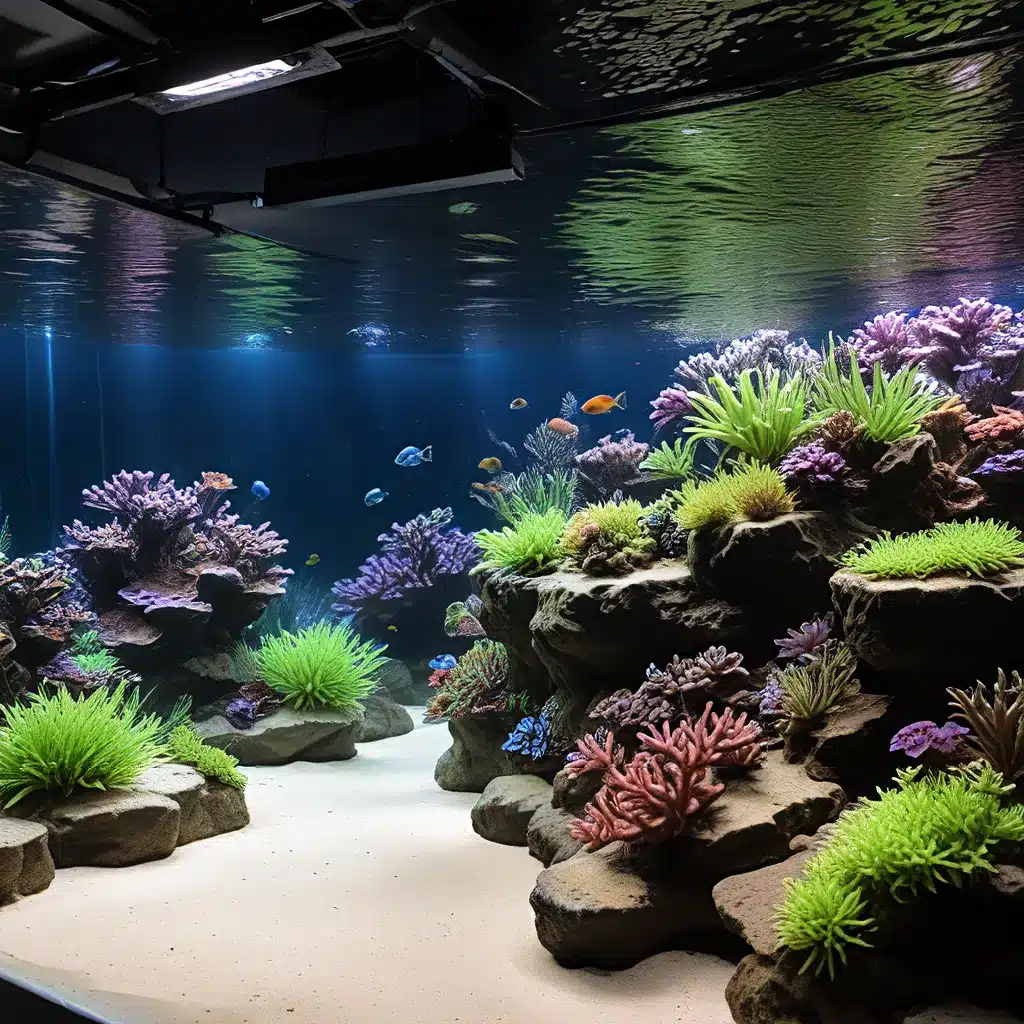
The Evolving Landscape of Saltwater Aquarium Lighting
Maintaining a thriving saltwater aquarium is a delicate balance of various factors, and one of the most critical elements is the lighting. As the aquarium hobby has evolved, so too have the lighting technologies available to hobbyists. From the traditional fluorescent bulbs to the cutting-edge LED and plasma lighting solutions, the choices can be overwhelming. In this comprehensive article, we’ll explore the nuances of these advanced lighting systems and how they can be optimized to create captivating underwater ecosystems.
Transitioning to LED Lighting
One of the most significant advancements in saltwater aquarium lighting has been the rise of LED technology. LEDs offer a multitude of advantages over traditional lighting sources, including improved energy efficiency, longer lifespan, and precise control over spectrum and intensity. By carefully selecting LED fixtures that emulate the natural light spectrum, aquarists can create environments that closely mimic the ocean’s vibrant colors and support the specific needs of their corals, fish, and invertebrates.
When researching LED lighting options, it’s crucial to consider factors such as coverage area, color temperature, and intensity. Aquarists should also be mindful of the color rendering index (CRI), which measures the ability of a light source to accurately reveal the true colors of an object. High-CRI LEDs can help enhance the natural beauty of your aquarium inhabitants and bring out the vibrant hues of your live corals.
Exploring the Potential of Plasma Lighting
Another cutting-edge lighting technology making waves in the saltwater aquarium hobby is plasma lighting. Plasma lamps, also known as high-intensity discharge (HID) lights, offer exceptional light output and color rendering capabilities that can rival natural sunlight. These systems are particularly well-suited for deep-water aquariums or setups with high-light demanding coral species.
One of the key advantages of plasma lighting is its ability to deliver a broad spectrum of light, including the ultraviolet (UV) and actinic wavelengths that are crucial for the health and growth of many marine organisms. Additionally, plasma lamps are known for their long lifespan, often lasting thousands of hours before needing replacement.
When considering plasma lighting, aquarists should carefully evaluate the power requirements and cooling needs of these systems, as they can generate significant heat. Proper ventilation and temperature control are essential to ensure the longevity and optimal performance of plasma lighting fixtures.
Integrating Lighting Control Systems
As the sophistication of saltwater aquarium lighting has evolved, so too have the control systems available to aquarists. Programmable lighting controllers and smart home integrations have transformed the way we manage our aquarium lighting, allowing for precise scheduling, dimming, and spectrum adjustment to mimic the natural light cycles of the ocean.
These advanced control systems enable aquarists to create dynamic lighting environments that can be tailored to the specific needs of their aquarium inhabitants. By automating the lighting regimen, hobbyists can ensure their corals, fish, and invertebrates receive the appropriate light exposure at different stages of the day and throughout the year.
Optimizing Lighting for Aquascaping
In the realm of aquascaping, lighting plays a crucial role in enhancing the visual appeal and health of the underwater landscape. Carefully selected lighting fixtures can accentuate the intricate details of aquatic plants, showcase the vibrant colors of corals, and create a sense of depth and dimension within the aquarium.
When planning an aquascaping project, it’s essential to consider the lighting requirements of the various plant species and coral types. High-light plants and SPS (small-polyp stony) corals may require more intense lighting, while low-light plants and LPS (large-polyp stony) corals may thrive under more moderate illumination.
By leveraging the versatility of LED and plasma lighting, aquarists can create dynamic and visually stunning aquascapes that captivate both the enthusiast and the casual observer.
Maintaining Optimal Water Quality
Regardless of the lighting technology chosen, the success of a saltwater aquarium is heavily dependent on maintaining optimal water quality. Proper filtration, water changes, and chemical balancing are essential to ensure the health and longevity of your aquarium inhabitants.
The introduction of new lighting systems, whether LEDs or plasma, can sometimes disrupt the delicate balance of your aquarium’s ecosystem. It’s crucial to monitor water parameters closely and make any necessary adjustments to pH, alkalinity, and nutrient levels to ensure a stable and thriving environment.
Seeking Guidance and Resources
As the aquarium hobby continues to evolve, it’s crucial for hobbyists to stay informed and seek out reputable sources of information. Platforms like King Aquarium offer a wealth of resources, including expert articles, product recommendations, and community forums, to help aquarists navigate the complexities of saltwater aquarium care, including the selection and integration of cutting-edge lighting technologies.
By staying informed and leveraging the latest advancements in lighting, aquarists can create stunning and captivating saltwater aquariums that not only delight the senses but also provide a nurturing environment for a diverse array of marine life.
Conclusion
The world of saltwater aquarium lighting has evolved rapidly, offering aquarists a wide range of innovative solutions to enhance the beauty and health of their underwater ecosystems. From the energy-efficient and customizable LED lighting to the high-powered and spectrum-rich plasma lighting, the choices can be overwhelming. However, by understanding the unique benefits and considerations of these advanced technologies, hobbyists can make informed decisions and create captivating aquarium setups that showcase the vibrant colors and intricate details of their marine inhabitants.
By staying informed, seeking guidance from reputable sources, and maintaining optimal water quality, aquarists can navigate the complexities of cutting-edge lighting technologies and unlock the full potential of their saltwater aquariums. The journey of aquarium care is an ever-evolving one, and the advancements in lighting are just the beginning of the exciting possibilities that lie ahead.

